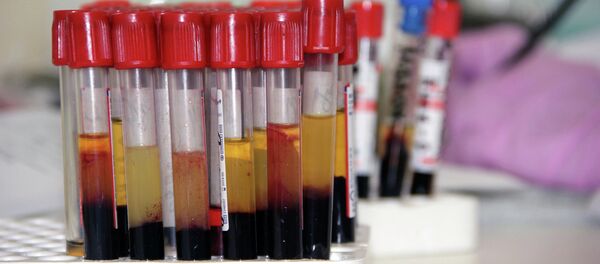UNITED NATIONS, December 2 (Sputnik) — The Joint United Nations Programme on HIV and AIDS (UNAIDS) has so far been unable to stop HIV from spreading in Eastern Europe, Central Asia, Northern Africa, and the Middle East, Simon Bland, who leads the New York office for UNAIDS, told RIA Novosti Tuesday.
"We see trajectories that are positive. Number of infections is coming down and number of deaths is going down except for few regions. In a few regions we are worried that trends are going in other directions,” Bland said, adding that the infection is on increase in Eastern Europe, Central Asia, Northern Africa, and the Middle East.
Adolescents and young people are most vulnerable to HIV, he added.
On World AIDS Day on Monday, UN also released a report, indicating that there have been declines in both the number of new infections, and the number of AIDS-related deaths.
“By the end of 2013, 35 million people were living with HIV worldwide. New HIV infections in 2013 were estimated at 2.1 million, which was 38% lower than in 2001. The number of AIDS-related deaths also continues to decline, with 1.5 million people dying of AIDS-related causes in 2013, down 35% from the peak in 2005,” the report said.
The UN report noted however that some groups are still at risk.
“Only about three fifths of countries have risk reduction programs for sex workers, while access to HIV prevention services remains low among men who have sex with men; 88 countries report that fewer than half of men who have sex with men know their HIV status from a recent test result, while 50 countries report more than half know their status.”
Most countries fail to provide opioid substitution therapy or access to sterile needles and syringes for people who inject drugs, the report added.
HIV is human immunodeficiency virus that causes the AIDS, acquired immunodeficiency syndrome. HIV infection is transferred with blood and other bodily fluids. According to the World Health Organization, 35 million of people were living with HIV and 1.5 million people died of HIV-related illnesses, as of December 2013.
December 1 is the World AIDS Day that has been held annually since 1988, aimed at supporting people living with HIV and commemorating those who have died from the disease.






